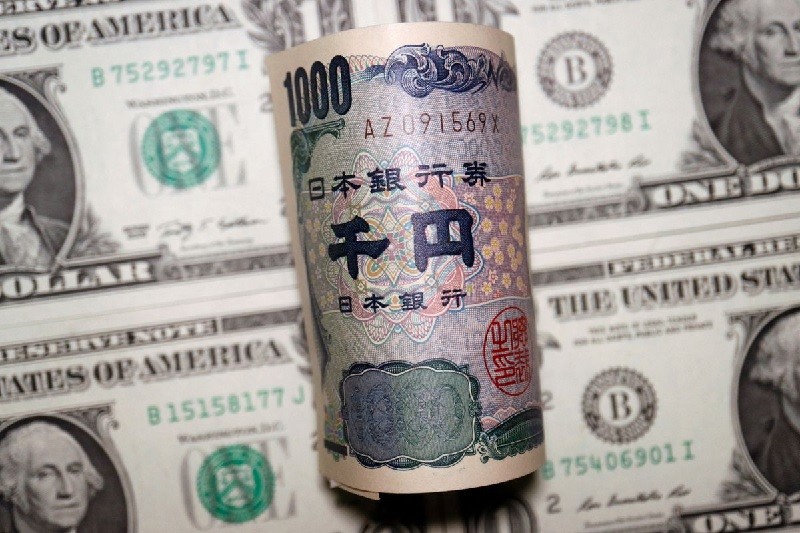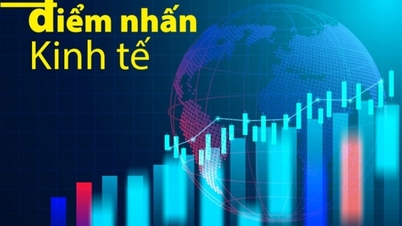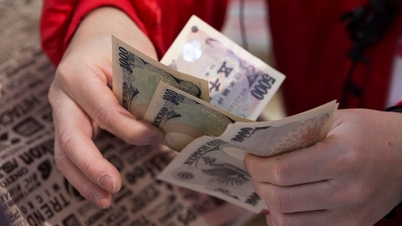After the violent fluctuations in 2024, is the Japanese Yen still a safe asset, protecting investors from the impacts of economic and market instability?
 |
| The Yen saw strong fluctuations. (Source: Reuters) |
The yen saw significant volatility throughout much of 2024. The currency weakened and fell to its lowest level since 1986, forcing the Bank of Japan (BoJ) to intervene in July 2024.
Previously in May 2024, the BoJ had to intervene in the currency market when the Yen slid to 160 Yen/USD.
Following the BoJ’s decision to raise interest rates in July 2024, the Japanese stock market and the yen have experienced many ups and downs. The Nikkei 225 index recorded its biggest daily drop since 1987 on August 2, amid a strong yen reversal.
Still a safe asset
Despite the yen's volatility, analysts surveyed by CNBC said the currency's safe-haven status is solid thanks to its predictable nature.
“We believe that the yen can still be called a safe asset because Japan is the world's largest foreign creditor, has a sustainable current account surplus and domestic inflation is under control,” said economist Ryota Abe of Sumitomo Mitsui Bank.
Surpluses usually make a currency stronger, while deficits weaken it.
Hugh Chung, investment advisory director at Endowus, a fund and asset management platform, noted that the Yen often appreciates when bond yields and the US stock market both fall, as in the 2008 crisis and the collapse caused by the Covid-19 pandemic in 2020.
Conversely, the yen tends to weaken against the dollar during periods of heightened risk sentiment, causing US bond yields to rise while stock prices fall, as happened in 2022 when the US Federal Reserve raised interest rates sharply to fight inflation.
"The strong fluctuations of the Yen this year are due to the large difference between US and Japanese government bond yields. The yield on 10-year Japanese government bonds is currently just over 1%, while the yield on 10-year US government bonds is nearly 4%," said Mr. Chung.
Before the BoJ lifted its yield curve control policy on March 18, the gap was even wider, with the yield on Japan's 10-year bond at 0.796% and the yield on US government bonds at 4.304% on March 16, the last trading session before the BoJ's announcement.
This interest rate differential has led to a phenomenon called carry trading, in which investors borrow Yen at low interest rates to invest in higher-yielding assets.
When the BoJ raised interest rates, the yen turned sharply higher, rising more than 12% in about three weeks, from 161.99 yen per dollar on July 3 to 141.66 yen per dollar on August 5, as investors rushed to exit carry trades.
The Japanese currency will remain a safe haven in situations where economic growth is threatened, Chung said.
 |
| A corner of Tokyo, Japan. (Source: AFP) |
Not an intrinsic factor
Expert Ryota Abe from SMBC said that the strong fluctuations of the Yen are due to changes in the external environment, not due to internal factors in Japan.
The biggest contributor to the yen's volatility in August was "excessive concerns" that the US economy could fall into recession after higher-than-expected unemployment figures and weaker-than-expected job growth.
“Of course, I can't completely rule out the impact of the BoJ's surprise rate hike in July, but it was only 0.15 percentage points, and the initial reactions to the BoJ's decision were quite mixed,” added expert Ryota Abe.
If the BoJ's decision was the main cause of the volatility, the market reaction should have been much stronger, Abe said, adding that the yen should have been bought back immediately after the BoJ's decision, but that was not the case.
The BoJ's decision was announced on July 31, but the Yen only moved significantly on August 2 and 5.
The yen will trade around 145 yen per dollar this year, and any gains will depend on how quickly the Fed cuts interest rates, which is “extremely important,” according to Ryota Abe, an economist.
The expert emphasized: "The Japanese currency will increase to around 138 Yen/USD by the end of 2025 with some major fluctuations and the possibility of reaching 130 Yen/USD is not excluded."
The economist did not completely rule out the possibility of a BoJ rate hike, noting that Tokyo's second-quarter 2024 gross domestic product (GDP) showed a stronger-than-expected recovery in personal consumption, which could strengthen the case for a BoJ rate hike.
However, Mr. Hugh Chung has a different opinion.
“Yen volatility has probably peaked this year as the exit from the carry trade has somewhat taken place and central bank moves are likely to surprise markets less,” he said.
The direction of the Yen will likely depend largely on the growth prospects of the US economy.
Source: https://baoquocte.vn/dong-yen-nhat-chao-dao-nhung-van-vung-vi-the-huong-di-con-dat-cuoc-o-nen-kinh-te-lon-nhat-the-gioi-284627.html



![[Photo] General Secretary To Lam holds a brief meeting with Russian President Vladimir Putin](https://vphoto.vietnam.vn/thumb/1200x675/vietnam/resource/IMAGE/2025/5/10/bfaa3ffbc920467893367c80b68984c6)

![[Photo] Prime Minister Pham Minh Chinh chairs a meeting of the Steering Committee for key projects in the transport sector.](https://vphoto.vietnam.vn/thumb/1200x675/vietnam/resource/IMAGE/2025/5/10/0f4a774f29ce4699b015316413a1d09e)




























































































Comment (0)